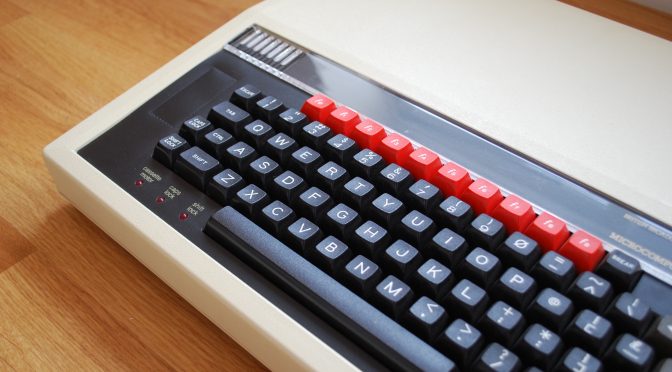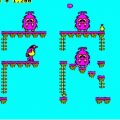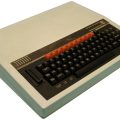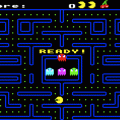What’s so special about the BBC Micro?
I’ve long been a fan of the BBC Micro, having first been introduced to the machine at School in the early 80’s. As the owner of a primitive ZX81, the full colour graphics and proper keyboard made the BBC Micro seem so advanced compared to what I could use at home. I would go along to computer club at lunchtimes to learn more about programming, but more often than not we would end up playing games such as Snapper and Planetoid – arcade perfect conversions of the titles we queued for in the local arcades at the time.
Eventually I would end up owning an Acorn Electron, a cut-down version of the BBC Micro that delivered most if not all of the BBC experience, but I still felt I was missing out, so ineventually saved up to buy a BBC Master Series computer, a more advanced version of the origianal. This was the computer that got me through my A-Levels, including a Computer Science qualification that formed the basis for my degree, again in Computer Science.
So for me the BBC range of computers have always been special, and over 30 years after my first computer club, I decided to go out and find myself an original Beeb.
Which is the Best BBC Micro?
The Beeb came in two flavours, the Model A and the Model B, which differed based on the amount of RAM available, having 16k and 32k respectively. The budget model A also had less hardware connectivity options, with various ports removed, and due to the lack of RAM could not support all of the available video modes. After the model B came “plus” models with greater memory, and ultimately the Master Series range which had 128k memory and ROM cartridge ports, as well as a separate numerical keyboard.
For me though it has always been the Model B with its iconic beige case, and the square footprint, which represented the BBC at its height, and also the first computer I truly listed after. So off to eBay I went to look for a perfect working model.
BBC Micro Buying Advice
Like many aging home computers, there are a couple of things to look out for when considering your purchase. The first is the keyboard – whether it be the Spectrums fragile keyboard membrane or the BBC’s well used buttons, these are often victims to the passage of time. The second is the case, which can be subject to nasty yellowing with age: Vic 20’computers and BBC micros both suffered from this affliction, which is linked to flame retardants used to protect the machine’s plastics. The final thing in the case of the BBC in particular is the power supply which can often fail. The BBC has an on-board supply which features capacitors which can dry out with age, resulting eventually in a nasty but non-fatal “pop” accompanied by acrid smelling smoke.
So finding a good one is a case of trawling eBay for a cosmetically clean machine with a good keyboard that shows little signs of being fiddled with, and a pale cream rather than yellowy brown case. If the seller shows the BBC working then then is is obviously a good sign, but it doesn’t mean the power supply isn’t fragile and could let go at any time. Fortunately this is an easy fix (more on this later).
My first BBC Micro Purchase
After being unsuccessful bidding on a “perfect” machine, mainly because I didn’t want to pay the silly money being asked for fully reconditioned boxes, I decided I would go for a fixer-upper that I could add some value to. The first purchase was a fully working model B that suffered from a bit of yellowing to the case, and as such fell into my budget – I picked this up for £30 plus postage. After a nervous wait for delivery, I powered up the machine (which actually looked better than advertised) and plugged into a LCD monitor via a an RGB to Scart cable purchased online. The classic twin tone beep told me things were going to be OK, the aging BBC Micro presenting me with the minimal start screen prompt.
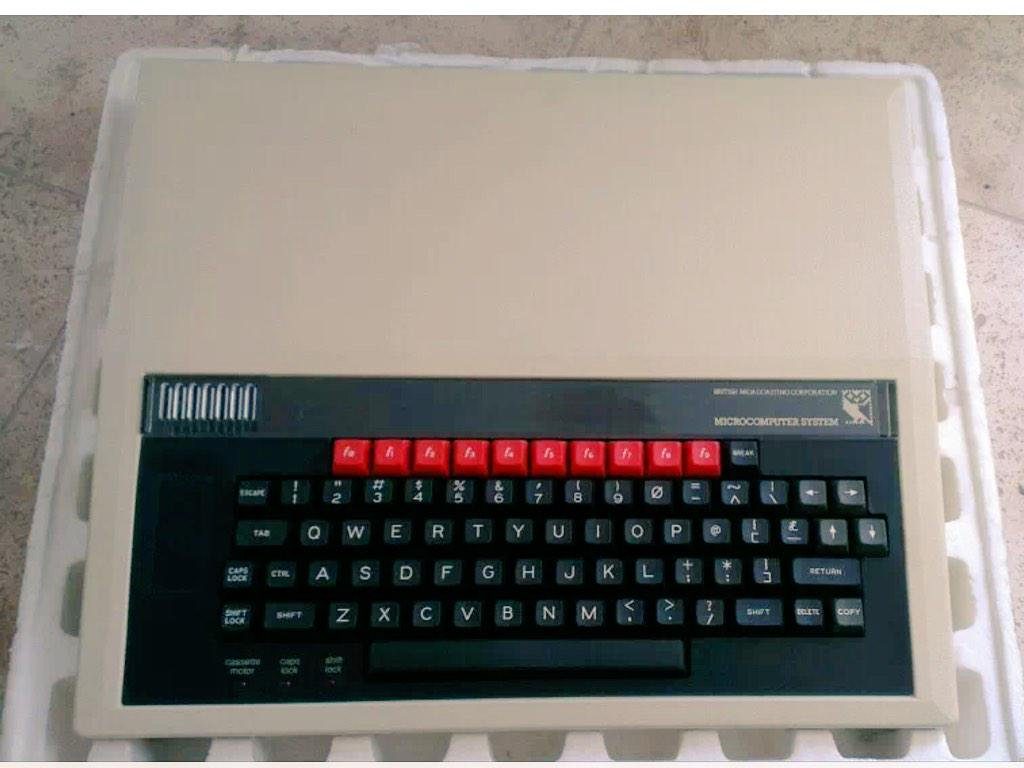
At this stage I couldn’t do much more with the machine as we were in the middle of a house renovation, so I stored the machine away with the intention of cleaning up the case in the summer after building work was complete. I’d found a secret recipe online for renovating yellowed plastics, and as well as getting the power supply reconditioned, this would be my next step on the way to getting my perfect BBC Micro.
While the BBC Micro seemed to be working fine, something was missing and I realised that in order to truly recreate that 1982 Beeb experience I would need an appropriate display, namely a Microvitec Cub monitor.
The Microvitec Cub Monitor – The Perfect BBC Micro Companion
Back in computer club, there were 2 flavours of monitor, with both green-screen and full colour versions available. The Microvitec Cub Monitor had the benefit of being painted the same colour as the BBC Micro, and would sit on a stand above the BBC Micro keyboard, it’s 14″ screen the perfect size in proportion to the computer case. Connectivity was via an RGB cable which provided a perfectly stable image, much better than the TV connection, but still with the lovely CRT scan lines than would be missing from a modern LCD monitor.
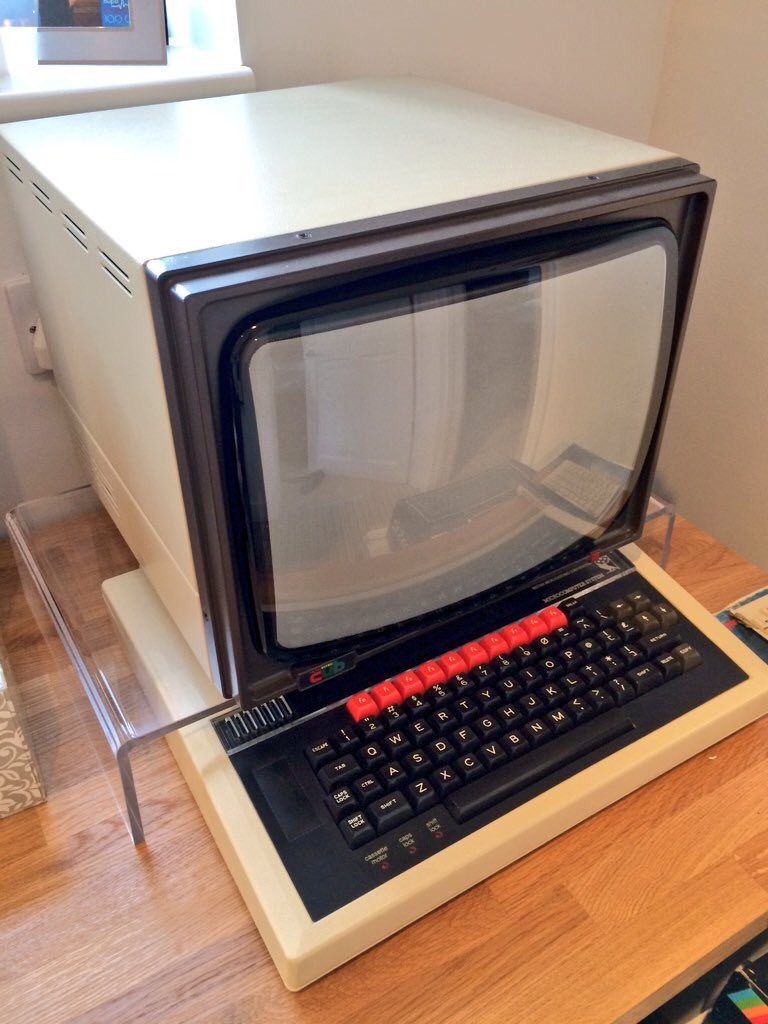
After a few failed bids on some overpriced examples (obviously these devices are in huge demand from Beeb owners like me) I managed to find not one but two examples in an auction, the owner being local to me in Essex so having the advantage of not requiring postage. In the end I picked up both at for £50 – a steal assuming I could offload one of them for the same and make this essentially a “free” monitor.
A quick trip to Southend, and I was in the possession of 2 very nice monitors, which both worked first time when plugged into my BBC micro via an RGB cable which came with the original BBC micro auction. With building work still going on I packed them safely away in the loft until I had the space to assemble them properly.
BBC Micro Tape, Disk Drive or Flash Card?
The traditional BBC Micro gaming experience involved a portable cassette tape player and an agonising wait for your game to load (or not) into memory, the BBC like many early home computers not having any internal storage device such as a hard disk drive. Given the fragile nature of cassette tape, or any 30 year old magnetic storage media for that matter, I decided that this would be a step too far, albeit the most authentic experience. The disk drive approach was also rejected, which whilst quicker to load was not desirable due to the lack of original games still available to play on 5.25″floppy disk.
In the end I resorted to the most practical alternative, that of a custom flash drive connected to the original equipment via a special adaptor, to allow original BBC Micro games to be played without the need for more mechanical (and fallible) input devices and media. Whilst there are potential objections to the use of copied disk images of these games, which are freely available on the Internet, my view is that I will only be playing games that I had already bought in the 80’s, so no harm is being done.
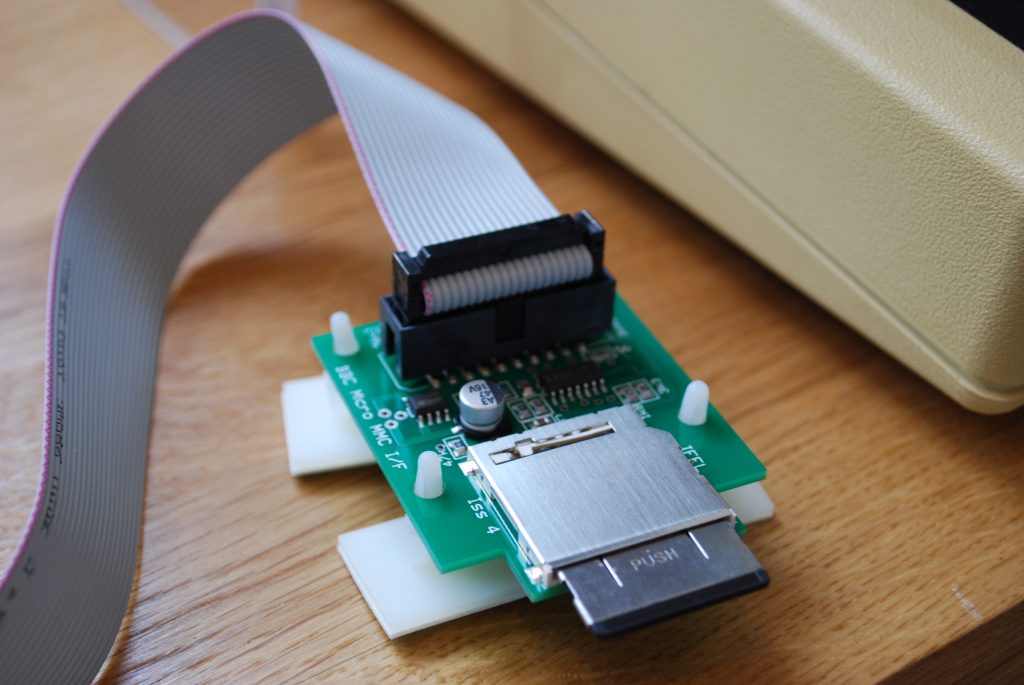
After a bit of research I settled on an MMC based solution, which would allow me to play all of my old favourite games with the minimal of effort, and without the need to modify the BBC in any way apart from the insertion of a bespoke EPROM chip in an empty slot on the motherboard.
Repairing a Poorly BBC Micro
The time had come to assemble the respective components of my BBC Micro based system, which had actually grown in size since my original purchase, having found another mint but only partially working example on eBay. I figured I should be able to make at least one perfect BBC out of my two purchases.
I decided that I would actually get both working, so I sent off my Beeb to Mark at Retro Clinic (www.retroclinic.com) for a service and for the all important capacitor replacement. I’ve subsequently become a lot more confident with a soldering iron but in this case I wanted a professional job. A couple of weeks later and my BBC Micro was back with me and ready for installation of the MMC card interface.
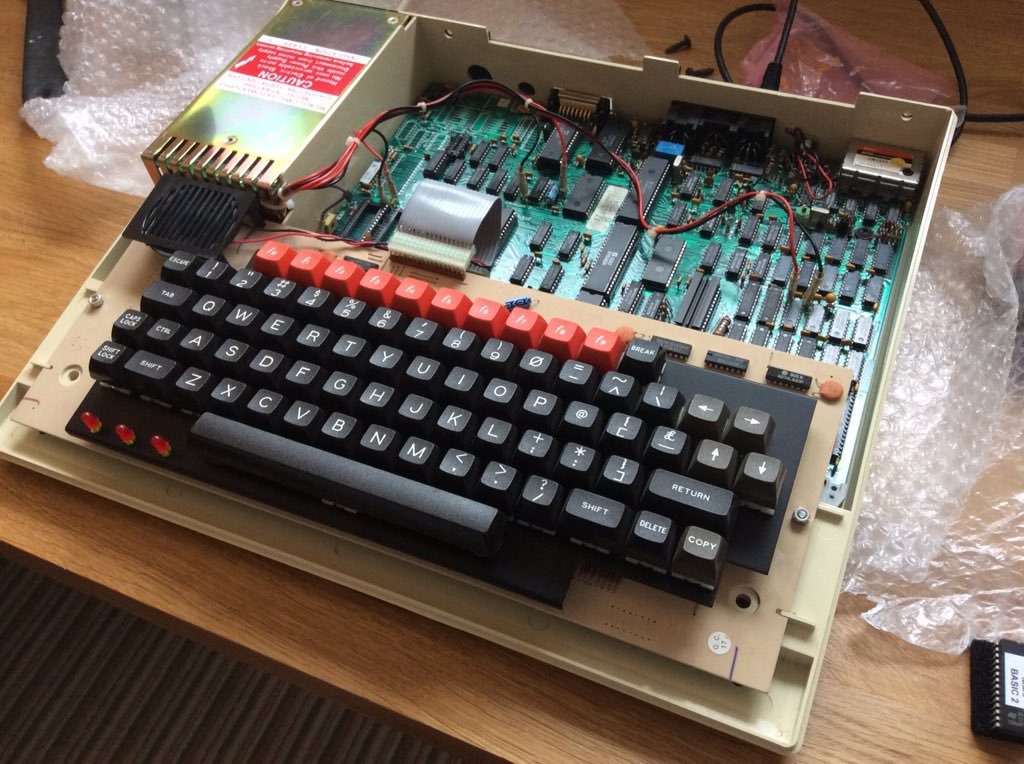
The flash drive installation process ended up being very simple – open up the BBC Micro, find a spare ROM slot and carefully seat the custom ROM, taking care not to bend the pins. Plug in the card to the serial interface, and turn her on. The usual BBC prompt now featured the words Turbo MMC!
A quick instruction to call up the menu and the screen instantly showed the MMC Card Menu, with a list of installed games already in place. No lengthy loading, quicker than a tape or even a floppy disk!
The Games – is the BBC Model B as good as I remembered?
First stop – Chuckie Egg! Followed by a huge list of my old favourites including Elite, Mr Ee!, Knight Lore, Daredevil Denis, Snapper, Planetoid and Killer Gorilla. So many great memories, and the instant access of the MMC Card interface soon made up for the lack of loading screens. And yes the BBC Model B can still recreate some of those early arcade games better than any home computer before or since. Certainly up to the arrival of MAME on the PC.
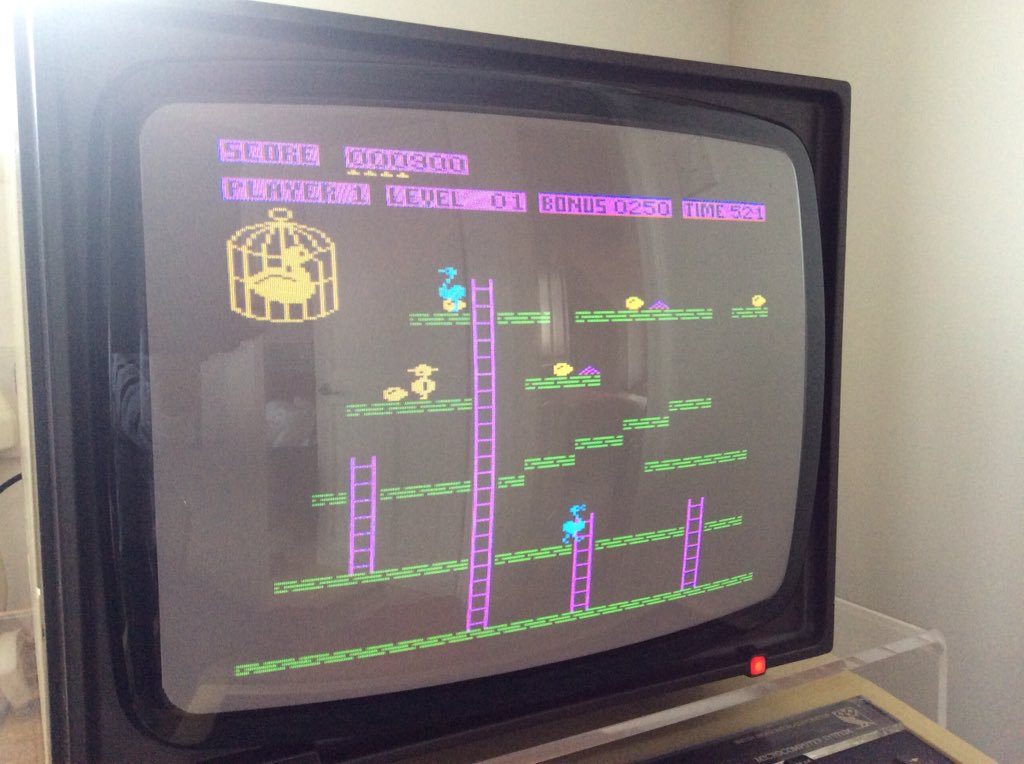
I would highly recommend getting hold of one of these machines while they are still being found in lofts and garages, with bomb proof build quality and the availability of solid state interfaces and tape images of the old software titles freely available, it’s a great way to experience these classic games all over again.
Many thanks to Mark Haysman of RetroClinic, and Chris Pitts the creator of the MMC Interface
